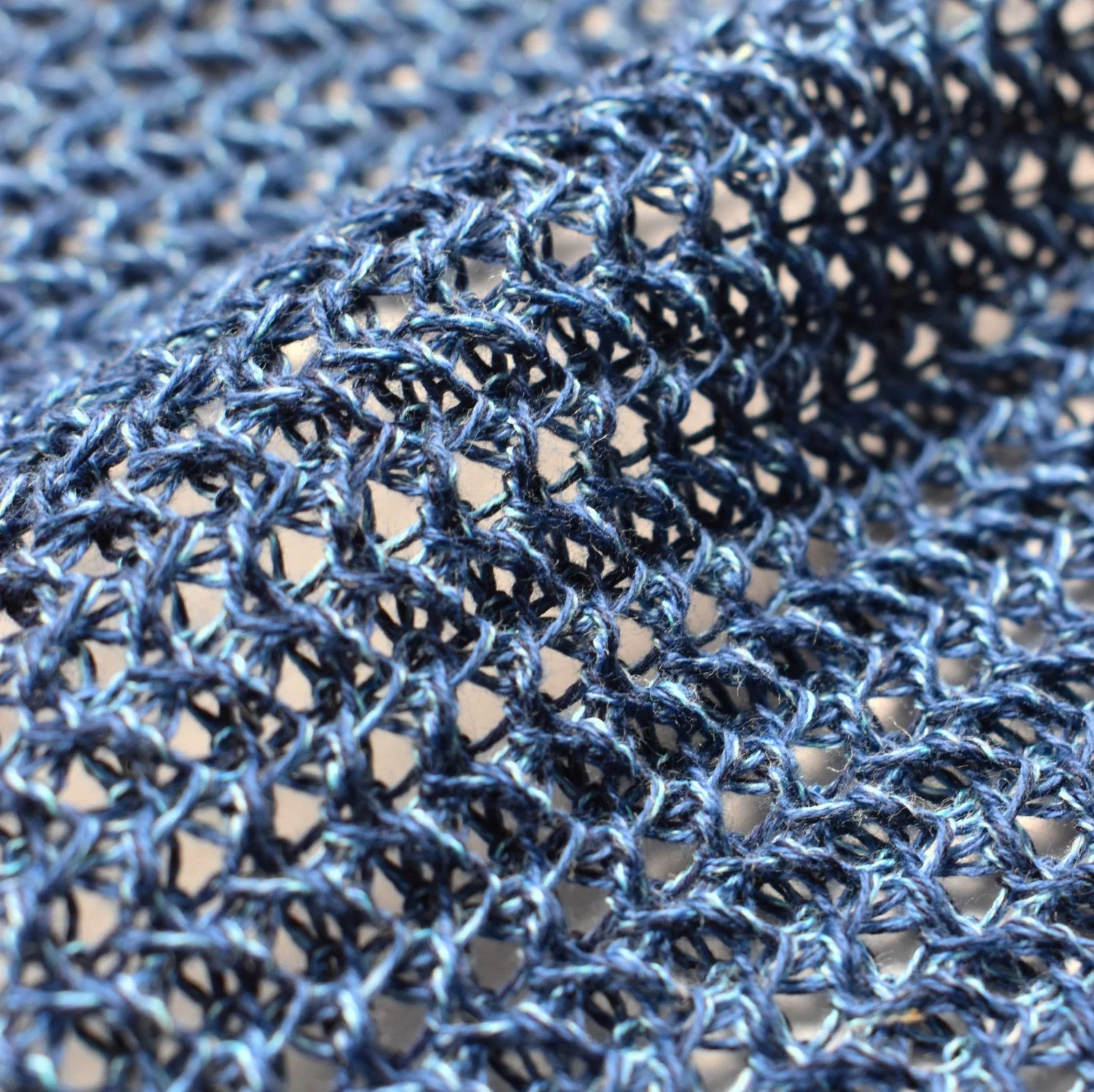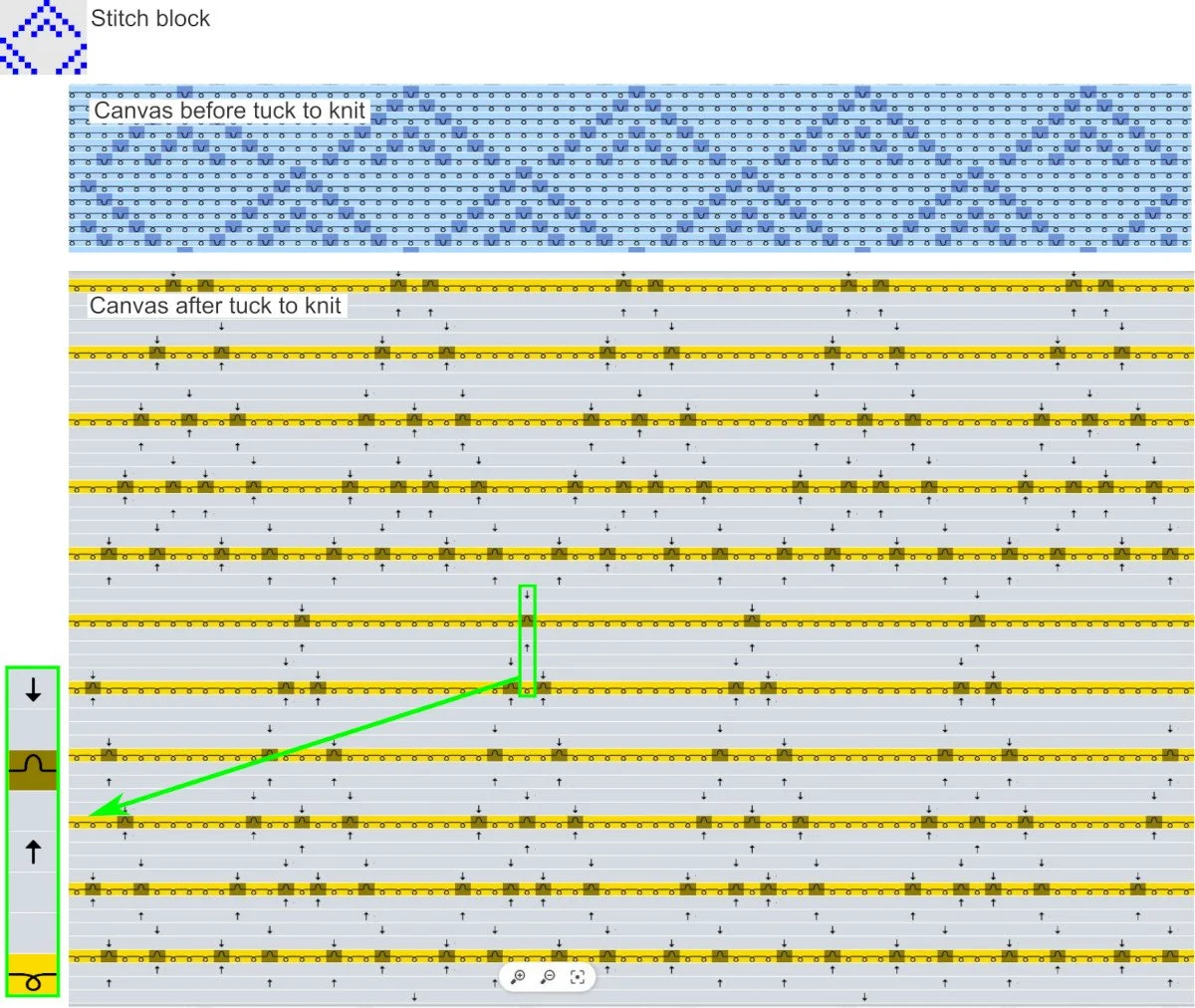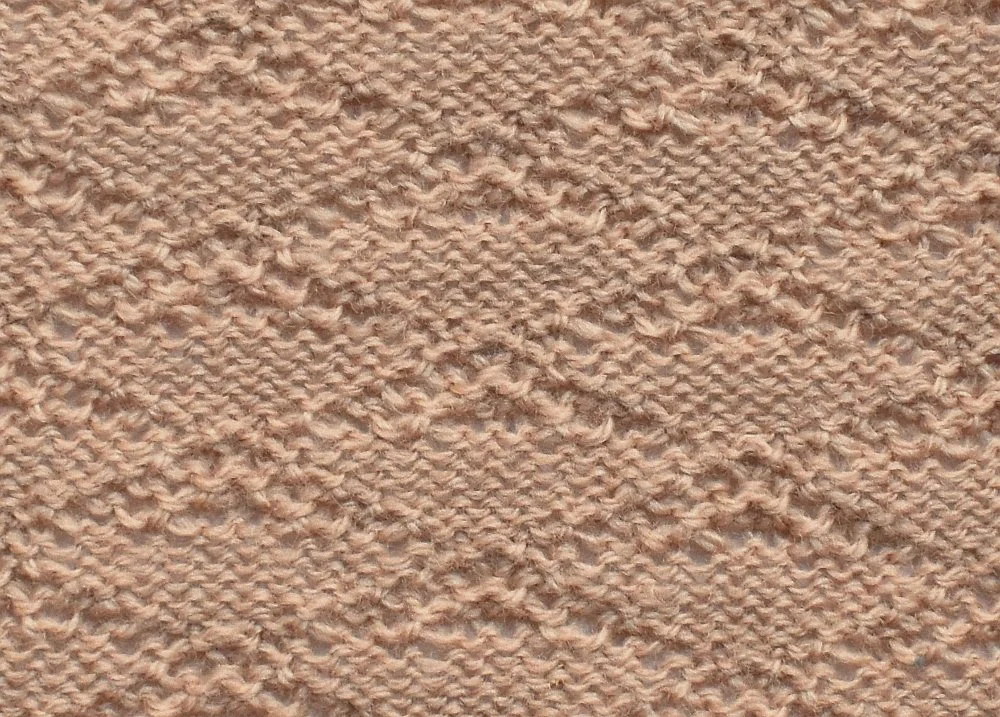An Even Better Tuck
Back when I wrote “A Good Tuck” followed by “A Good Tuck, Part 2”, I thought I was done talking about tuck operations for a while. But there have been updates to the Kniterate design app and compiler. Here’s a bit of background:
The original technical information for Kniterate stated that tucks and knit stitches weren’t possible in the same carriage traverse on the same bed. Because the racked pattern at the top of this page has tucks and knits on opposite beds in the same pass, a stitch pattern such as this was never an issue. Though it looks complex, it's rather straightforward. It was the basic jersey tuck fabric that was seemingly impossible.
Turns out, however, that a jersey tuck was indeed possible. Before the first Kniterate shipment, a strategy for knitting on one bed as the other tucked, then transferring the tucks to the knitting bed was discussed in the forum. This theory was correct as seen in the image below.
Though tucks could be managed this way, precise stitch size settings were necessary to keep the tucks, transferred from the rear bed, from dropping. Unlike when a knit drops, a dropped tuck appears as a miss. Sometimes, depending on the yarn, stitch pattern, and which side of the fabric faces the public, the difference between a tuck and a miss can be difficult to spot. Still, a miss is not a tuck. (A few unintentional misses appear in this swatch.) The method sometimes required lots of test swatches.
Jersey Tucks via Kickbacks?
With the early compiler, painting tucks and knits on the same bed in the same carriage pass yielded an error. With an update some time in 2023, tucks and knits in the same row became possible to compile.
Kniterate can now knit the fabric using a kickback, one tuck at a time. What happens is the carriage knits up to the point of the first tuck stitch. The feeder places yarn in the hook of the next needle for the tuck stitch. The carriage does a kickback (a change in direction mid pass). The carriage then continues in its initial direction, knitting the next stitch or series of knit stitches before repeating the tuck/kickback operation for the next tuck loop. It's slow, but it works. The kickback action keeps the tucks in the hooks and the jersey tuck fabric is knitted.
I honestly can't imagine knitting a single piece of an adult sized garment this way. An okay use might be stabilizing a few long floats in a multicolored single jacquard stitch pattern or when there are only a couple of tucks per row.
The Tuck to Knit Command
At the end of 2023, the tuck to knit command was introduced. Though the sequence (at the bottom of the next image) looks complex on the canvas, users need only paint the tuck where it’s required in the jersey design or use a stitch block. The tuck to knit command will insert all operations needed to place the tuck on the front bed with the knit stitches.
These are the operations the tuck to knit macro executes:
On the needle where a tuck will appear, the preexisting knit on the front bed is transferred to the rear bed.
The next row is knitted with a tuck made on the needle of the transferred stitch.
Then both the original knit stitch and the tuck on the rear bed are transferred to the front bed.
Works great for jersey tucks on the front bed.
Tucks and Knits on both Beds in the Same Row?
There is no macro yet for placing tucks and knits on the rear bed in the same row. This would be necessary for more complex rib tuck patterns with or without racking. At some point I may get around to using a combination of tuck to knit with painting in added operations for tucks and knits on both beds (in the same row) and some very fancy stitches.
O!
If you’re a Kniterate user, you may be interested in my prerecorded Designing with Kniterate classes. (Session 3 focuses on tucks!) If you’re not an owner yet, I’d be happy to give you a virtual tour of the machine.





